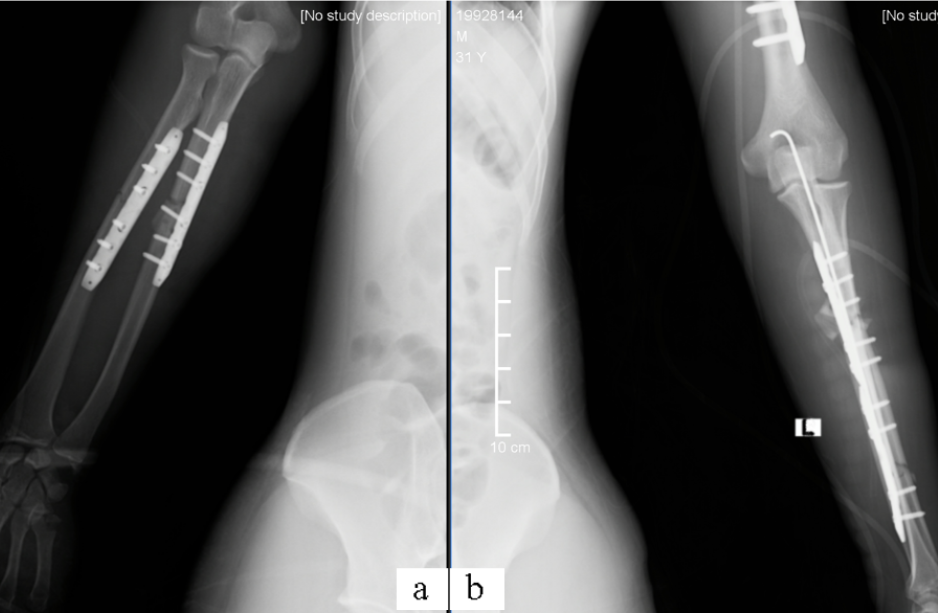Case series report: simultaneous internal fixation of multiple fractures
DOI:
https://doi.org/10.15419/bmrat.v10i8.828Keywords:
multitrauma, polytrauma, multiple fracture, internal fixation, early total care, damage control orthopaedicsAbstract
Background: Polytrauma is often associated with a high mortality rate and requires intensive management. Although several cases of polytrauma have been reported as being related to thoracic or brain injury, there are few reports concerning multiple fractures. We aimed to present a case series report about polytrauma with multiple fractures, highlighting several clinical importance and management strategies.
Case presentation: The first case is a 31-year-old male patient who was admitted to the emergency department with multiple injuries from violent abuse, including intraperitoneal bladder rupture, right pulmonary contusion, bilateral closed femoral shaft fractures, bilateral closed humeral shaft fractures, and bilateral closed radius and ulna shaft fractures. Case 2 is a 41-year-old female who was involved in a motorcycle accident in a head collision, with multiple wounds and multiple fractures, including the right distal third radius, ulna, 2nd metacarpal, right distal third tibia, and fibula. The last case is a 25-year-old comatose male patient who was hospitalized with several wounds and bruises on the right lower extremity and left forearm after a traffic accident. He was diagnosed with a concussion, crush wound of the right foot with metatarsal fractures, and a closed fracture of the right middle third femur, right middle third tibia, and left distal third radius. Three cases of multiple trauma were reported, in which we successfully internally fixed four to eight fractures at once without any complications after the procedure. The patient's wound status at admission, such as whether they have an open fracture or a complex wound that could become infected and result in sepsis or hemorrhagic shock, should be a crucial factor considered when deciding whether to perform emergency orthopedic surgery. Additionally, patients who have been properly stabilized and do not have any concomitant conditions or concurrent soft tissue injuries can receive early total care. Patient awareness is a critical sign for serial CT brain scans and additional surveillance before definitive fracture fixation.
Conclusion: This report can serve as a reference for management decisions in future instances within the context of national healthcare capacity.

Published
Issue
Section
License
Copyright The Author(s) 2017. This article is published with open access by BioMedPress. This article is distributed under the terms of the Creative Commons Attribution License (CC-BY 4.0) which permits any use, distribution, and reproduction in any medium, provided the original author(s) and the source are credited.
